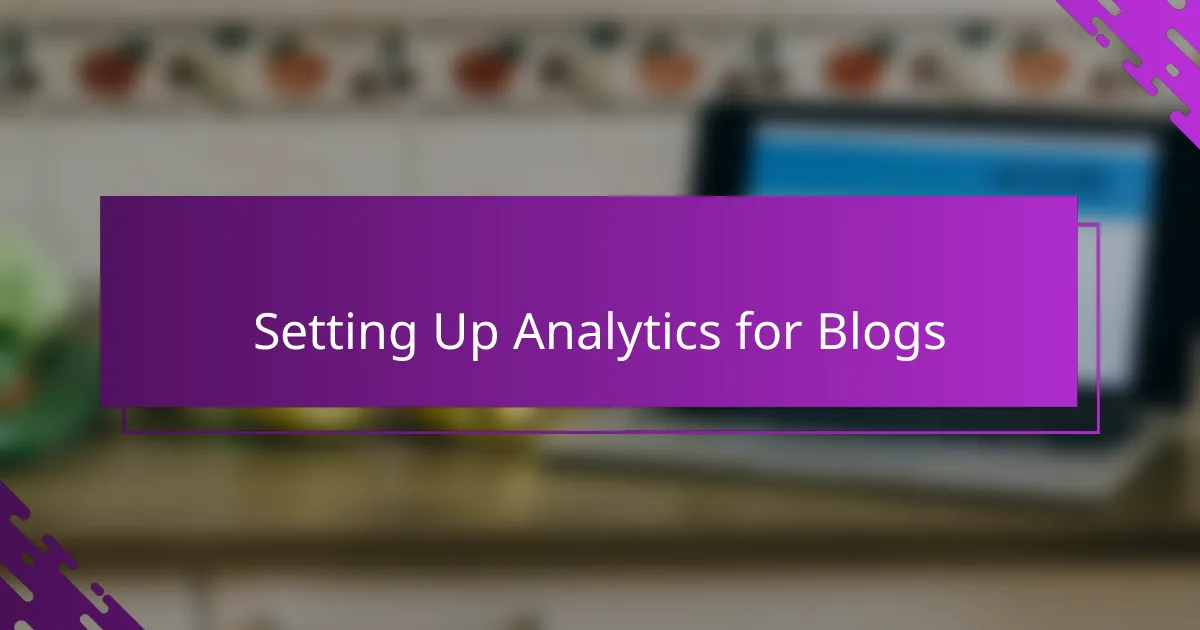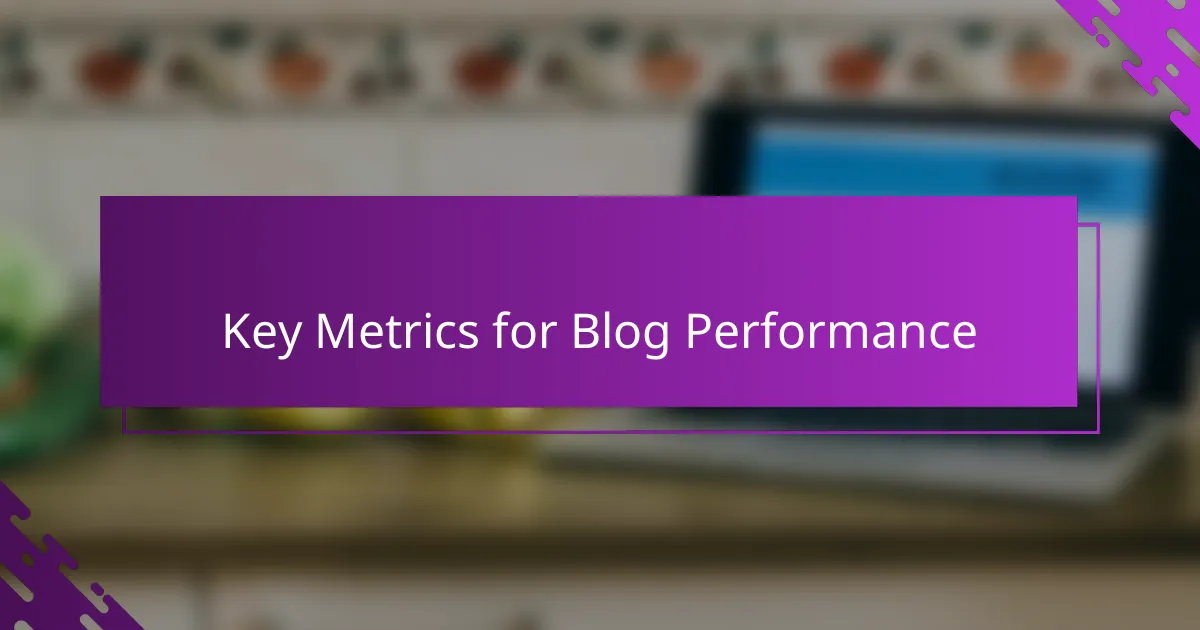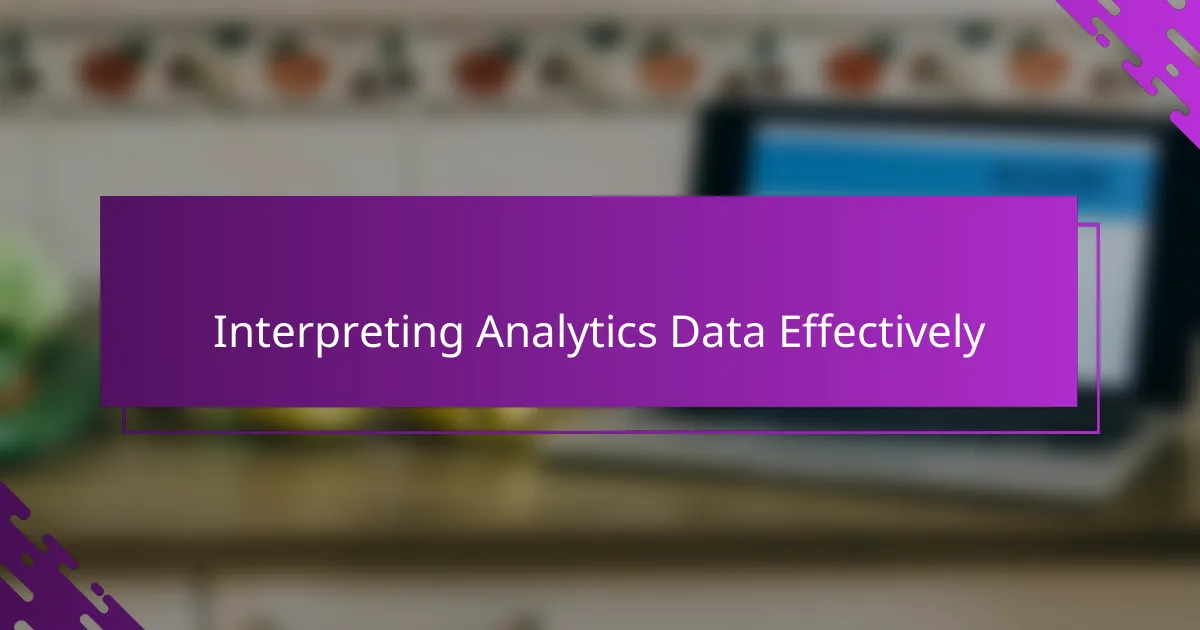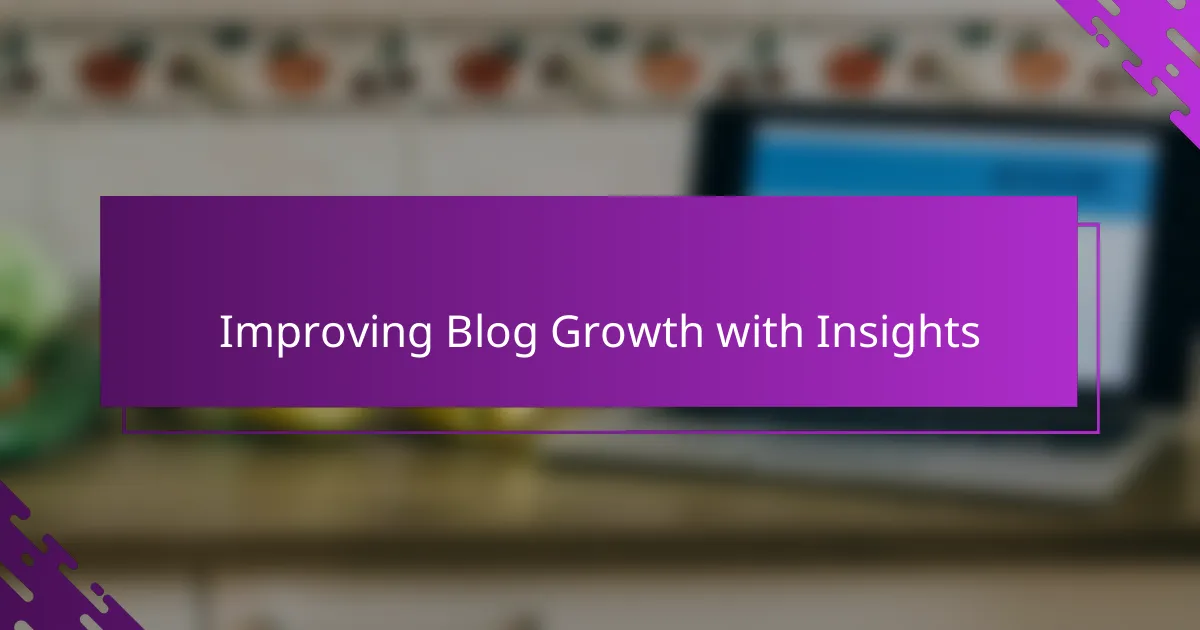Key takeaways
- Understanding basic metrics like sessions and bounce rate is crucial for interpreting audience interaction and content performance.
- Properly setting up Google Analytics with filters enhances data accuracy and provides clearer insights for decision-making.
- Analyzing user behavior, such as navigation patterns and traffic sources, guides content creation and promotional strategies effectively.
- Personalizing your blog strategy based on analytics fosters deeper reader connections and improves overall content engagement and growth.

Understanding Google Analytics Basics
When I first opened Google Analytics, the sheer amount of data was overwhelming. But understanding the basics—like users, sessions, and bounce rate—helped me start making sense of how people interacted with my blog. Have you ever wondered what those numbers really mean for your content?
One thing that stood out to me was how “sessions” capture every visit, not just unique visitors. This detail shifted my perspective because I realized that returning visitors were a sign of loyalty, and I wanted to nurture that connection. Exploring these fundamentals made me feel more confident about interpreting the data instead of feeling lost.
Getting comfortable with the main dashboard took some trial and error, but focusing on key metrics like page views and average session duration was a game-changer. These insights told me which posts resonated with readers and which ones needed improvement. Don’t you find it satisfying when numbers start telling a clear story?

Setting Up Analytics for Blogs
Setting up Google Analytics for my blog was surprisingly straightforward once I took the time to follow each step carefully. I remember feeling a mix of excitement and nervousness as I created my account, added the tracking code, and connected it to my website. Have you ever set up a tool like this before and thought, “Am I doing this right?” I definitely did.
Placing the tracking code correctly was a crucial moment. I almost missed it on my first try, but once it was live, the real magic began—watching visitor data flow in felt like unlocking a new level in my blogging journey. It made me think about how small technical details can have such a big impact on what you can learn.
Another thing that caught my attention was customizing my Analytics view to filter out my own visits. At first, I didn’t realize how much my own clicks were skewing the numbers, but setting up filters gave me cleaner, more honest data. Have you noticed how sometimes the tools we rely on can fool us if not set up right? I learned that the setup phase is just as important as understanding the numbers later on.

Key Metrics for Blog Performance
When I first dived into the key metrics for my blog’s performance, the numbers like bounce rate and average session duration really caught my attention. It was eye-opening to see how a high bounce rate meant visitors were leaving quickly, signaling I needed to rethink how engaging my content was. Have you ever noticed how a single percentage can spark so many ideas about what’s working and what’s not?
I also learned that tracking page views wasn’t just about counting clicks—it was about spotting trends and reader favorites. Some posts had way more views than I expected, and that pushed me to create more content around those topics. Seeing these patterns felt like having a direct conversation with my audience through data.
Another metric that surprised me was the source of traffic. Realizing whether visitors came from search engines, social media, or direct links helped me decide where to focus my promotion efforts. Have you tried shifting your strategy based on where your readers come from? It’s amazing how these numbers can guide your blogging decisions.
![]()
Tracking User Behavior on Your Blog
One of the most eye-opening parts of tracking user behavior was seeing exactly how readers moved through my blog. I was surprised to find that some visitors would jump between several posts, while others left after the first page. Have you ever wondered where your readers lose interest? Watching these patterns helped me rethink the layout and links within my posts.
It was fascinating to watch real-time data showing clicks, scroll depth, and time spent on specific sections. I remember feeling a mix of curiosity and excitement, almost like eavesdropping on my readers’ thoughts without them knowing. This kind of insight made me realize the power of subtle tweaks, like repositioning a call to action or breaking up dense paragraphs.
Another discovery came when I noticed certain devices or browsers led to shorter visits. That made me dig deeper into mobile usability and loading speeds. It’s a reminder that understanding user behavior isn’t just about numbers; it’s about empathizing with the experience someone has when visiting your blog. Have you tried putting yourself in your reader’s shoes through analytics? It’s a game-changer.

Interpreting Analytics Data Effectively
Interpreting analytics data effectively felt like learning a new language to me—one that required patience and a willingness to see beyond the surface numbers. I realized early on that data without context is just numbers; understanding what those numbers mean in relation to my blog’s goals made all the difference. Have you ever stared at a report and wondered what story it’s trying to tell?
One trick I found helpful was focusing on trends over time instead of fixating on daily fluctuations. For example, a sudden spike in traffic might seem exciting, but looking deeper showed me it was from a one-time mention on social media, not sustained interest. That taught me to prioritize patterns that indicate real growth, rather than chasing every peak.
Sometimes, the most valuable insights came from unexpected places—like seeing which posts led readers to explore other sections of my blog. It made me rethink how I linked content and structured navigation. Have you noticed how little adjustments based on analytics can improve the overall reader journey? It’s those subtle moments that truly transform your blog’s performance.

Personalizing Your Blog Strategy
Personalizing your blog strategy felt like unlocking a new layer of creativity for me. Once I saw which topics and formats really clicked with my audience, I started tailoring my content to match those interests instead of guessing what might work. Have you ever tried shifting from a one-size-fits-all approach to something more customized? It often makes blogging feel more rewarding and less like shooting in the dark.
It wasn’t just the type of posts that mattered, though; timing and promotion channels played a big role too. I noticed that publishing on certain days and sharing through specific platforms got me better engagement. That insight pushed me to rethink when and where I put effort, creating a rhythm that aligned with my readers’ habits. Have you explored your blog’s unique rhythm yet? It’s fascinating how these small shifts can spark bigger connections.
Most importantly, personalizing my strategy turned analytics from a chore into a conversation with my readers. Each data point started feeling like feedback, guiding me toward content that truly resonated. When you make your blog strategy your own, do you find it easier to stay motivated and inspired? For me, that personal touch transformed the whole blogging experience.

Improving Blog Growth with Insights
When I started using insights from Google Analytics to improve my blog growth, it felt like I was finally listening to my readers in a whole new way. Suddenly, those numbers weren’t just stats—they became clues showing me where to focus my energy. Have you ever had that moment when data stops being confusing and starts feeling like a helpful guide? That’s exactly how it was for me.
One thing that stood out was how small changes, inspired by analytics, could create noticeable results. For example, by identifying which posts kept visitors engaged longest, I prioritized similar topics and noticed my blog’s growth picking up speed. It was satisfying to see tangible improvements from actions that once felt like educated guesses.
It also made me rethink my approach to promotion. Knowing where my traffic came from let me invest more time in platforms that actually worked, rather than spreading myself thin. Have you tried focusing your efforts based on real data? Shifting to a more strategic, insight-driven method made growth feel less random and more intentional—a game-changer in my blogging journey.
